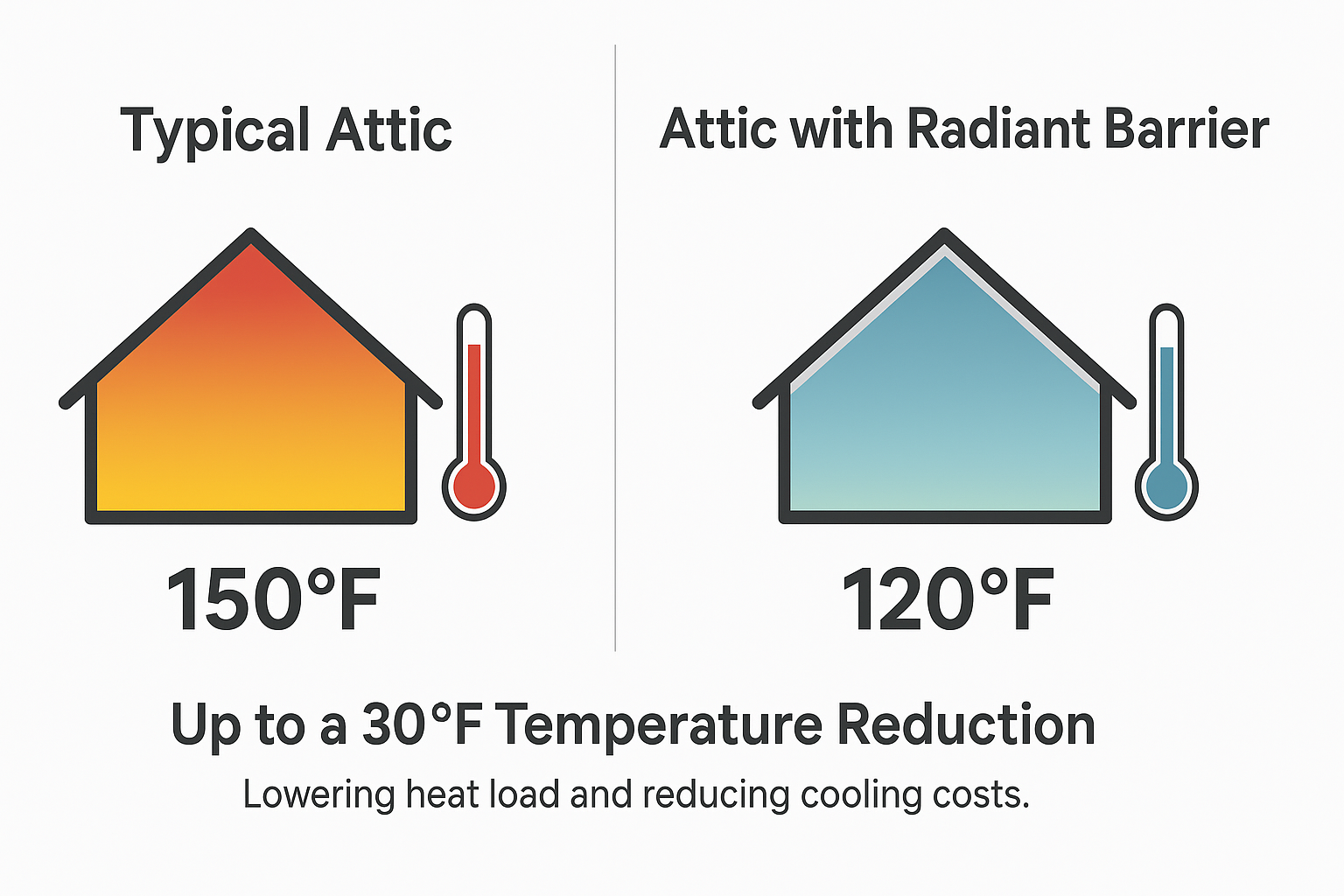Is a Radiant Barrier Worth It for Your Florida Home?
Roof Vents
October 31,2025

If your air conditioner struggles to keep up with the Florida heat, your roof could be the culprit. The sun warms your roof, and that heat radiates down into your attic and living space, forcing your AC to work overtime—a common problem that also drives up energy bills.
A radiant barrier is a practical solution. At FoxHaven Roofing, we help homeowners understand how this technology works and if it’s the right investment for their property.
How Does a Radiant Barrier Work?
Think of a radiant barrier as a shade for your attic. It is a sheet of highly reflective material, usually aluminum, installed to block solar heat. When the sun heats up your roof, a radiant barrier reflects up to 97% of that radiant heat back outside before it can warm up your attic.
By reflecting this heat, a radiant barrier keeps your attic cooler and reduces the amount of heat that transfers into your home. The result is a more comfortable living space and less strain on your air conditioning system.
Pro Tip: A radiant barrier complements, but does not replace, traditional insulation. Insulation blocks heat transfer through contact, while a radiant barrier reflects heat traveling through the air. You need both for maximum efficiency.
Do Radiant Barriers Really Help in Florida?

Yes, they are especially effective in Florida’s climate. Research from the Florida Solar Energy Center shows that a properly installed radiant barrier can lower your cooling costs by 5-10%. It can also drop your attic temperature by as much as 30°F. With a cooling season that lasts most of the year, those savings add up.
Key Fact: An attic can reach over 150°F on a hot Florida day. A radiant barrier can reduce that temperature by as much as 30°F, significantly lowering the heat load on your home.
Our team has seen firsthand how radiant barriers make South Florida homes more comfortable. The combination of intense sun and a long cooling season makes this technology particularly effective for our region.
What Are the Installation Options?
Proper installation is key to a radiant barrier’s performance. The most common method for existing homes is attaching the barrier to the underside of the roof rafters. This creates an essential air gap and keeps the reflective surface clean from dust.
During new construction or a full roof replacement, we can install radiant barrier sheathing directly onto the roof deck. This is the most efficient time to add this feature. While it is possible to drape the material over your attic insulation, we generally advise against it, as dust can settle on the surface and reduce its effectiveness.
What Are the Disadvantages of a Radiant Barrier?
To make an informed decision, it’s important to understand the limitations. The main drawback is that radiant barriers don’t provide much benefit during Florida’s mild winters. They are also an upfront investment, though the energy savings typically recover the cost within 5 to 10 years. Finally, installation quality is critical.
Important Note: Improper installation can block vents and trap moisture, leading to bigger problems. Professional installation ensures your attic ventilation remains clear and the barrier performs as intended.
When Is the Best Time to Install a Radiant Barrier?

Timing your installation can affect cost and convenience. The most cost-effective time is during a roof replacement. If you are building a new home, incorporating a radiant barrier from the start is highly recommended.
For a standalone project, consider scheduling it in the spring before the summer heat peaks. Before you add a radiant barrier, we always recommend checking that your attic has adequate insulation. Addressing poor insulation first will ensure you get the maximum benefit from your new barrier.
Let FoxHaven Roofing Help You Stay Cool
A radiant barrier helps keep your Florida home comfortable and energy-efficient. When combined with proper insulation and a quality roof system, it adds a layer of protection against South Florida’s heat, helping you save money and reduce wear and tear on your AC unit.
At FoxHaven Roofing, we bring local expertise to every project. We understand Florida’s climate and building codes. Whether you’re considering a radiant barrier or another upgrade, our team can assess your home’s needs and recommend the best path forward.
Ready to improve your home’s comfort and lower your cooling costs? Contact FoxHaven Roofing today for your free, no-obligation assessment
